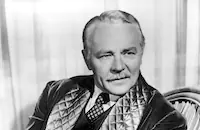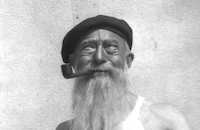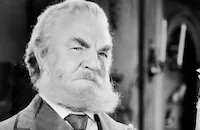Madame Butterfly
Brief Synopsis
Cast & Crew
Marion Gering
Sylvia Sidney
Cary Grant
Charles Ruggles
Irving Pichel
Helen Jerome Eddy
Film Details
Technical Specs

Synopsis
After her honorable samurai father's death, Cho-cho San becomes a geisha at Goro's Tea House to provide an income for her family and get married. A marriage is almost immediately arranged, when American naval lieutenant B. F. Pinkerton, who was brought to Goro's by his friend, Lieutenant Barton, falls in love with Cho-cho San at first sight and spirits her away into the garden. Upon finding out that he need only to leave port to divorce her, Pinkerton marries Cho-cho San. Because her name means butterfly in Japanese, Pinkerton nicknames her "Madame Butterfly." Their life together is blissful. She learns American customs but treats Pinkerton deferentially in the Japanese custom, and soon falls deeply in love with him. Pinkerton promises Cho-cho San that there is room in his heart only for her after she finds a photograph of Adelaide, an American woman, in his trunk. He is reluctant to tell her, however, of his imminent departure, and she finds out by accident. Cho-cho San is heartbroken, but cheers up when Pinkerton vows he will be true to her and return in the spring, when the first robin appears. Three springs pass before Pinkerton returns. By this time, Cho-cho San's son by Pinkerton is almost three-years-old, and she has refrained from naming him until his father's arrival, affectionately calling him "Trouble." Despite her family's urging, Cho-cho San refuses to marry again because Pinkerton told her they were married "till death do them part," but her family feels she has dishonored them and disowns her. In the meantime, Pinkerton has wed Adelaide and returns to Cho-cho San only long enough to tell her of his marriage. Steadfast, Cho-cho San does not reveal they have a son, although she is devastated by Pinkerton's betrayal and her own sense of shame. After sending her son to her family accompanied by her servant, Suzuki, Cho-cho San commits hara-kiri.

Director
Marion Gering
Cast

Sylvia Sidney

Cary Grant

Charles Ruggles

Irving Pichel
Helen Jerome Eddy

Edmund Breese
Louise Carter
Sandor Kallay
Judith Voselli

Sheila Terry
Dorothy Libaire

Berton Churchill
Philip Horomato
Crew
David Abel
Fred Datig
Giuseppe Giacosa
W. Franke Harling
Harry Hervey
Luigi Illica
Michio Ito
James King
Ernest Laszlo
Harry Lindgren
Jane Loring
Josephine Lovett
Joseph Moncure March
Giacomo Puccini
B. P. Schulberg
William E. Thomas

Film Details
Technical Specs

Quotes
Trivia
Notes
Giacomo Puccini's music from the opera is heard only in orchestral form. In one scene, Cary Grant sings "My Flower of Japan" (author undetermined). A news item in Hollywood Reporter indicates that production was temporarily postponed in August 1932, for an undisclosed reason. According to the pressbook and a news item in Hollywood Reporter, artist Edward Venturini spent six weeks on location in Japan doing research for transparencies and to film a statue of Buddha, built in 747 A.D., that was used in the film. In addition, J. H. Kerr of Los Angeles provided the Siamese cats used in the film. According to the Variety review, the seduction scene was "cleaned up" and "slightly purified by a native marriage ceremony." According to a contemporary Japanese article as quoted in a modern source, the film was a "flop in Japan, or at least Tokyo, because the psychological developments expressed by Cho-Cho San were not accepted by the general Japanese audience." The Japanese women regarded "Cho-Cho San with not so much sympathy as contempt." This article noted that the film showed outdated Japanese feudal behavior. Modern sources indicate that Gary Cooper was originally considered for the lead role, but turned it down. Among the other films based on the same source are: Paramount's 1915 Madame Butterfly, directed by Sidney Olcott and starring Mary Pickford and Olive West (see AFI Catalog of Feature Films, 1911-20; F1.2702); Germany's 1919 Harakiri, directed by Fritz Lang and starring Paul Biensfeldt and Lil Dagover; and the 1956 Italian-Japanese production of Madame Butterfly, directed by Carmine Gallone, photography by Claude Renoir and starring Kaoru Yachigusa, Michiko Tanaka and Nicola Filacuridi.












